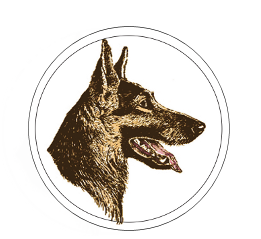When I first started training dogs 55yrs ago, it was considered a cardinal sin to use food as a reward. The most appropriate tool for motivating and positive reinforcement we were told, was verbal praise, in the form of an effective ‘good sound’. It was stressed to us by our instructors, both in the police, and the military, that dogs must work to please us, its pack leader, and NOT to please itself.
The logic behind this was simple. Any correction for disobedience, or any reward (positive reinforcement) for compliance, MUST take place at the exact moment of the act. Thus, when working any dog from a distance, it is just not possible to use food as an effective instant reward.
Thus, all control from a distance, has to be done using commands or a whistle, interwoven with good sounds (praise) or bad sounds (correction) to work the dog in the most effective manner. Any shepherd or policeman working their dogs will confirm this. In any case, having food around when working a dog can become a serious distraction. A great example of this, is when people send their dog away to a target which contains a hidden favourite comfort toy/article or yes, even food. In this way, they send the wrong message to their dog from the very beginning. IE rather than go forward to that article and lie down on command, the dog starts associating the send away command with a game of running to a target to find a toy or food. Then the games begin when it won’t lie down.
Another problem with continuously using food as a reward for some, is that it greatly complicates food refusal training for working trials tests.
However, having said all that, I have learned over the years, that the use of food, in the very initial stages of close up training of a puppy, or any new dog, can help get the penny to drop, and progress can be made much more quickly than voice praise alone. BUT, it is essential to accompany such food rewards WITH voice praise (the good sound and a loving pat/stroke) at exactly the same time. Then gradually wean the dog off the treat as soon as possible, eventually only using ones voice/good sound. So, to put it slightly differently, we are using the food to teach the dog the value of pure voice praise. This is known as operant conditioning. After all, even for a domestic dog, one can’t keep carrying around a bag of treats to reward Bonzo every time we call him or give him an instruction. The voice praise should do this.
Some even advocate the use of something called a hand held ‘clicker, but that makes no sense to me, as any dog worth its salt, should respond to praise from their masters voice rather than some inanimate clicking noise. Thus, a clicker is just another unnecessary object to have to hold and carry around, when the voice is there any time one needs it.
So yes, for any new dog or puppy, I use food with my voice to teach basic control exercises such as the come (recall), the sit, down, stand by the handler, and perhaps even the heel, turnings at the halt and the finish. BUT gradually, I dispense with the food and rely on praise as soon as I can.
This does not necessarily mean I can’t reward my dog at the end of a particularly successful heel course, track, area search or agility course by giving a treat, with extra praise, or even some ball throwing fun and games. I much prefer the latter.
Of course, when one visits a circus, one will see treats being offered almost every time the animals perform a trick. This is also true with the big cats. Those long guide sticks used by lion and tiger handlers do in fact have a small tit bit on the end. Far too risky to offer treats by hand!! But the biggest difference in a circus act, is that the animals are not actually being worked like, for example, a police dog on the job. They are performing tricks for the crowd, with food as the main motivator. Even those happy poodles are just performing, rather than working.
